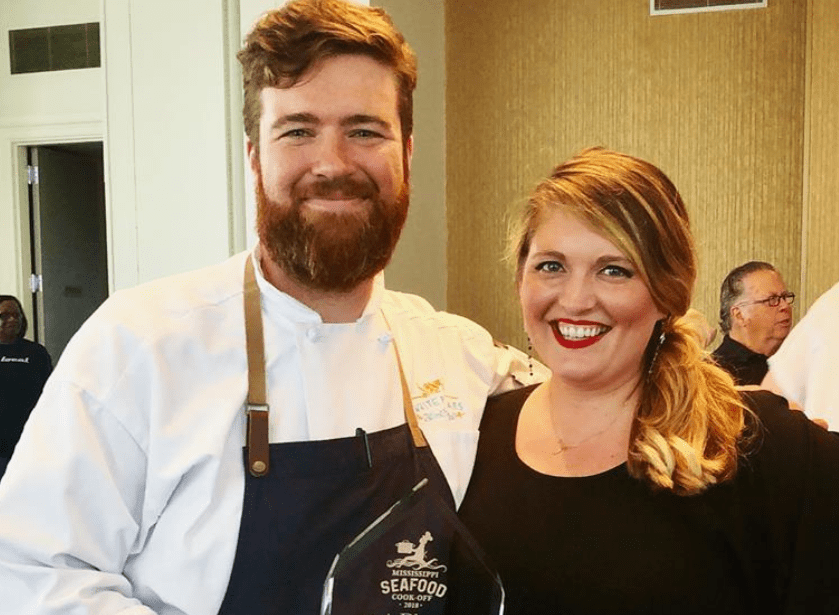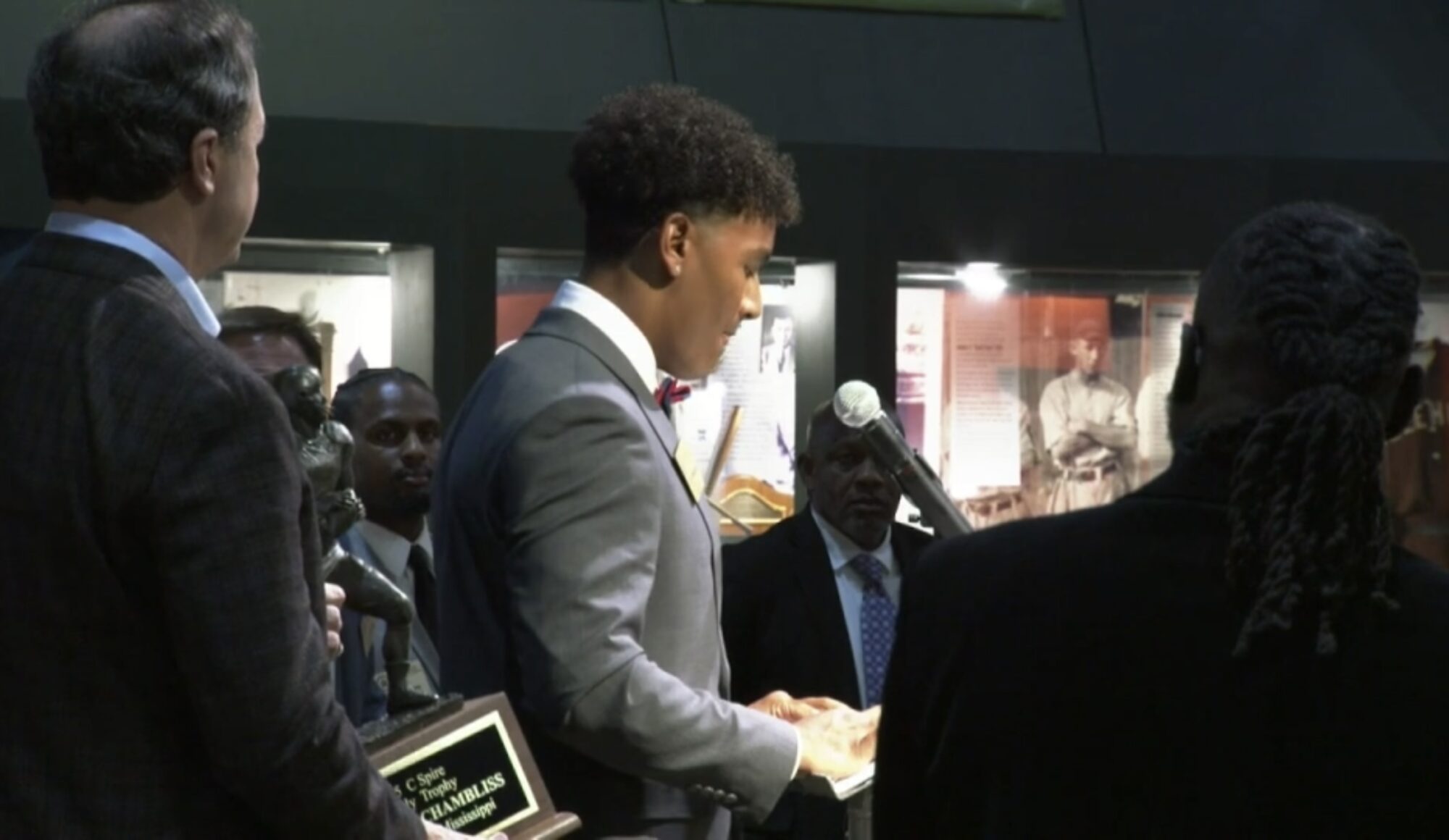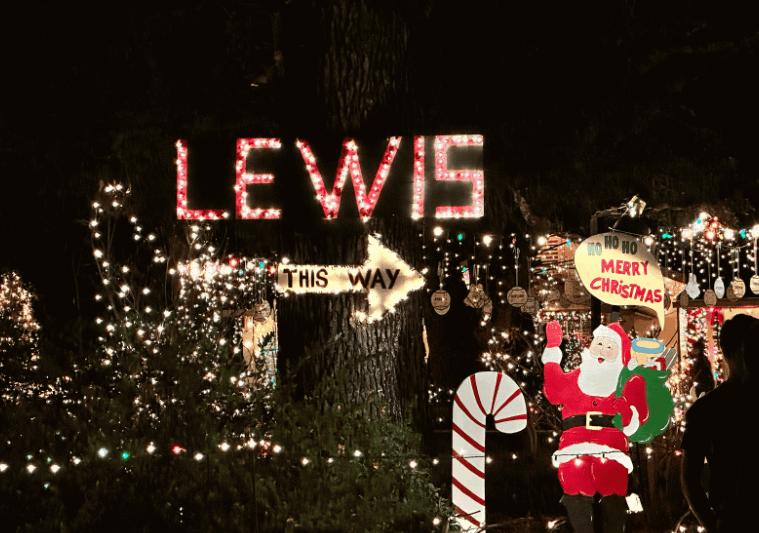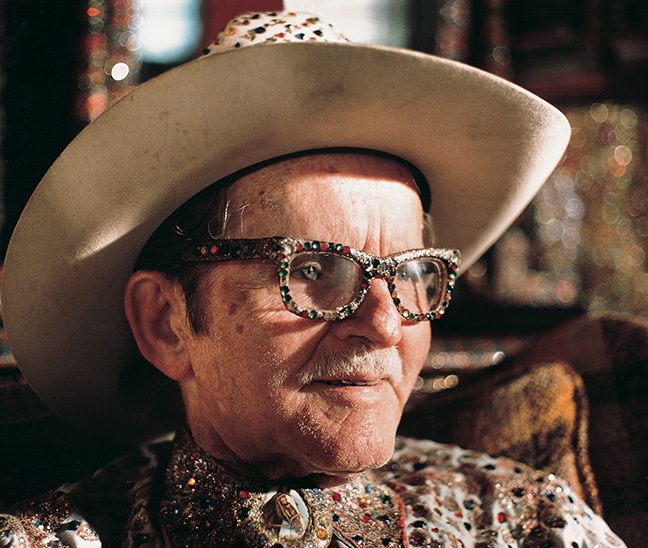
Loy Bowlin, 1990. Photo: Harrod Blank. www.harrodblank.com (Courtesy of the Kohler Foundation, provided by Pike School of Art)
- Bowlin covered his walls, jackets, cowboy hats, boots, and anything else he could find with shiny rhinestones. He even bejeweled his dentures and his Cadillac.
Loy Allen Bowlin was born in rural Franklin County, Mississippi, on September 16, 1909. A mechanic by trade, he married Ina Mae Mitchell in 1933. The couple farmed, and Loy sold scrap metal. They bought a typical craftsman’s bungalow in McComb, where they led a simple life.
In the 1950s, Ina Mae divorced Loy and moved on in search of bigger and better things. That left Loy in a state of depression. His faith in Christ was the only thing that kept him going.
To lift his spirits, he began decorating his home with colorful dots of paint. He thought that people might be motivated to stop in and visit him if his house looked beautiful and interesting. By the mid-1970s, the McComb native had transformed his persona into “The Original Rhinestone Cowboy,” inspired by Glen Campbell’s song by the same name. He began covering his jackets, cowboy hats, boots, and anything else he could find with shiny rhinestones. He even bejeweled his dentures and his Cadillac.
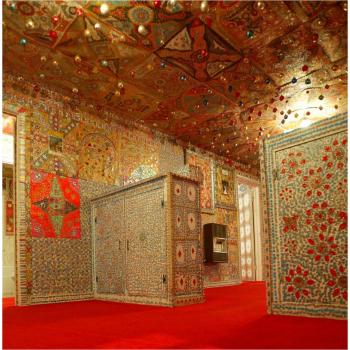
McComb residents loved to see Loy drive his bedazzled 1967 Cadillac through town. He would often stop at shopping centers and flea markets in his sparkling outfits and entertain people by dancing, playing the harmonica, and telling jokes.
As he grew older, it was harder to get out, so he stayed home more, where he began making art on posterboard using paint, glitter, pictures cut out of magazines, and rhinestones. He often said the art came to him in his dreams, and he would wake up and start creating his visions. The art covered his walls, and when he had no more wall space, he covered the ceilings. Glittering Christmas balls decorated with swirls of glitter were also attached to the ceilings. Every surface, including all of his furniture, was adorned with Loy’s art.
In a documentary about his art, Loy says his art came naturally to him. “Didn’t nobody show me nothing. It just came natural to me. I didn’t go to no schooling or nothing. It just came naturally to me.”
Loy died on June 14, 1995. Many distinctive art critics had already noted his work as an outsider artist. Loy had no children, and many wondered what would become of his “Beautiful Holy Jewel Home of the Original Rhinestone Cowboy.”
Artist and collector Katy Emde of Houston, Texas, had followed Loy’s work, and she was also concerned about the legacy of Loy’s art. She wanted to preserve his work for others to see. Katy and her mom traveled to McComb to see the home. Katy wanted to be sure that it was everything she thought it might be. She made an offer on the home, but there was one stipulation: she had to remove the home from the property. She bought the home in 1996 and began the task of archiving the art inside through photographs and diagrams before dismantling it and moving it to a storage facility in Texas. She made sixteen trips to McComb to complete the job.
In 1999, the Kohler Foundation, based in Wisconsin, agreed to acquire and preserve the home. The foundation gifted the masterpiece of Loy’s home, along with many of his customized hats, suits, and furniture pieces, to the John Michael Kohler Arts Center in Sheboygan, Wisconsin. The Kohler Foundation has been focused on preserving the work of self-taught artists since the 1970s. The Loy Bowlin home has been their most challenging project to date.

It took four years to reconstruct the home, and the work spanned many disciplines: engineering, architecture, carpentry, curation, preservation, and conservation. The exhibit was open to the public for a year and is now in storage.
In the documentary, John G. Peine, the exhibit architect, stated, “There is every bit as much compulsion in his work as you’d see in a Michelangelo, or someone who just has to create art.”
Pike School of Art is working to repatriate some of Loy’s art back to McComb. Executive director Calvin Phelps says the organization has received one Artist Select grant and three Core grants from Ruth Arts, named in honor of Ruth Kohler, who served as director of the John Michael Kohler Arts Center. Pike School of Art currently has four of his works, a celebration of one man’s imagination, vision, and labor.


